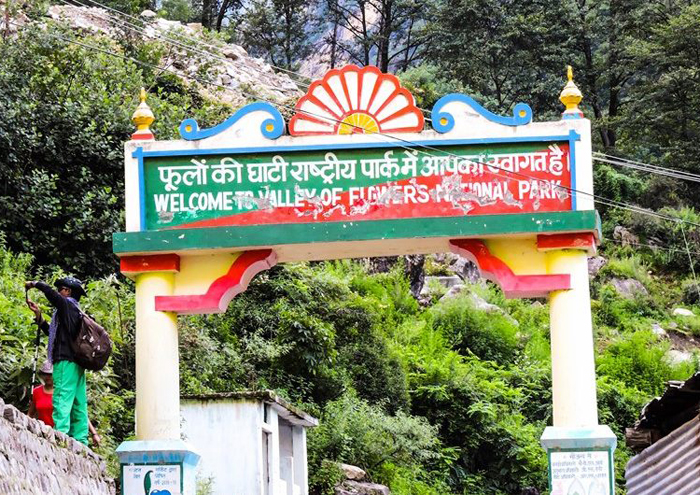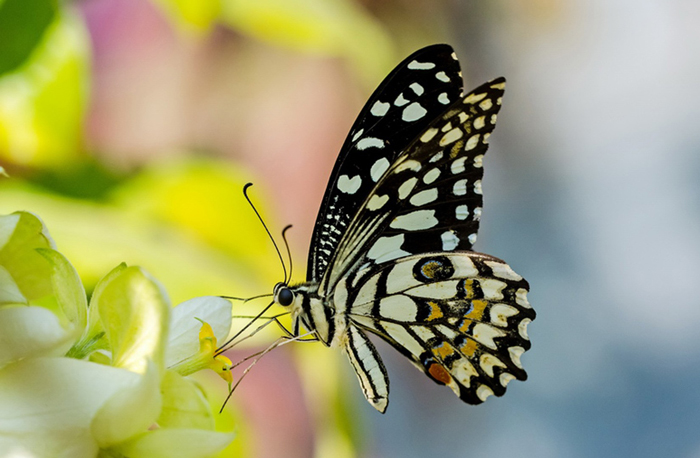Valley of Flowers National Park - Most Famous Treks, Hikes and Nature Walks in Uttarakhand.

Valley of Flowers National Park is an Indian national park, located in North Chamoli and Pithoragarh, in the state of Uttarakhand and is known for its meadows of endemic alpine flowers and the variety of flora. The park stretches over an expanse of 87.50 km² and it is about 8 km long and 2 km wide. The park lies completely in the temperate alpine zone. The Valley of Flowers National Park is the second core zone of the Nanda Devi Biosphere Reserve. The park has many species of medicinal plants including Dactylorhiza hatagirea, Picrorhiza kurrooa, Aconitum violaceum, Polygonatum multiflorum, Fritillaria roylei and Podophyllum hexandrum.

The Valley of Flowers is a high-altitude Himalayan valley that has long been acknowledged by renowned mountaineers, botanists, and in literature. It has been recognized internationally for over a century and is referenced in the Hindu religion. Local people have visited the valley since ancient times. Indian yogis are known to have visited the valley for meditation. The Valley of Flowers has many different colourful flowers, taking on various shades of colours as time progressed. The valley was declared a national park in 1982 and now it is a World Heritage Site.

At 3200 to 3700 meters above sea level, the Valley of Flowers National Park. The valley has three types of sub-alpine zones as follows: foothills alpine between 3,200 m and 3,500 m which is the upper height limit for trees, lower alpine between 3,500 m and 3,700 m, and higher alpine above 3,700 m. The habitats include valley bottom, river bed, small forests, meadows, eroded, scrubby and stable slopes, moraine, plateau, bogs, stone desert and caves. The lower surrounding hills in the buffer zone are thickly forested. This richly diverse area is also home to rare and endangered animals, including the Asiatic black bear, snow leopard, musk deer, brown bear, red fox and blue sheep. Birds found in the park include Himalayan monal pheasant and other high altitude birds.

Among the reptiles, most often seen are the high altitude lizard Agama tuberculata, Himalayan ground skink Leiolopisma himalayana and Himalayan pit viper Gloydius himalayanus. Along with the flowers are wild bees and many species of butterfly. A few of the more evident species are lime butterfly Papilio demoleus demoleus, common yellow swallowtail Papilio machaon, common Mormon Papilio polytes romulus, spangle Papilio protenor protenor and common blue apollo Parnassius hardwickei.
The park is open only during summer from June to October and it is covered by heavy snow for the rest of the year. It is the best time to visit, when the valley is full of flowers, just after the outbreak of monsoon. The visitors to Valley of Flowers need to get a permit from Forest Department at Ghangaria and the permit is valid for three days and visiting and trekking is allowed only during day time. Visitors are not allowed to stay inside the National park, so accommodation can be obtained at Ghangaria.

Getting to the Valley of Flowers requires a trek of about 17 km (10.5 mi). The nearest major town is Joshimath in Garhwal district, which has convenient road connections from Haridwar and Dehradun, both about 270 km (168 mi) south of Joshimath. From Delhi, one can take the train to Haridwar and then travel by bus to Govindghat via Rishikesh. Govindghat is approximately 24 km before another important destination of Badrinath. It is also possible to drive from Delhi to Govindghat, a distance of about 500 km. Govindghat is a small place close to Joshimath around one hour driving distance, where the trek begins. From Govindghat, shared taxis up to 4 km and then a trek of less than 11 km (8.6 mi) brings trekkers to Ghangaria, a small settlement located about 3 km (about 2 mi) from the valley. One can also hire a porter, mule or helicopter to reach Ghangaria. The trek from Govindghat to Ghangaria is common to the Gurudwara Shri Hemkund Sahib Sikh Temple at Hemkund and a trekker is likely to find many Sikh pilgrims on the route. The route is greeted by fields of perfumed wild flowers, wild rose bushes and wild strawberries by the sides of the path.
 EN
EN